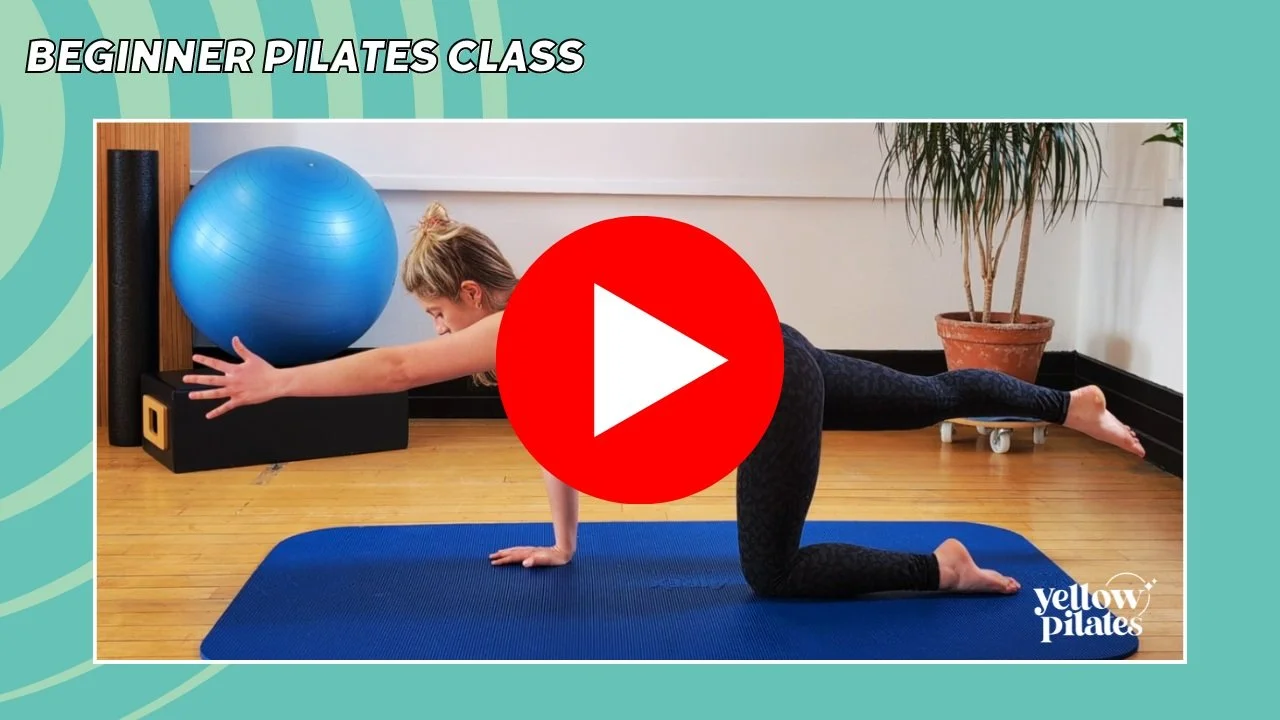Yoga vs. Pilates: What’s the Difference?
One of the most common questions I get asked is, "What's the difference between Yoga and Pilates?" While it's easy to see why people often group them together—both are low-impact, mind-body practices with a focus on breath and movement—the truth is, they are very different. They both have distinct origins, purposes, and benefits. Let’s look at their key differences.
Origins
Pilates was developed by Joseph Pilates in the early 20th century as a method of physical fitness that focuses on strengthening the body through controlled, precise movements. Initially called "Contrology," this method was designed to improve posture, mobility, and overall physical function. Pilates often incorporates equipment like the Pilates Reformer, to the practice.
Yoga, on the other hand, has a history that spans thousands of years, originating in ancient India. Unlike Pilates, which is focused on physical conditioning, yoga was developed as a spiritual practice aimed at preparing the body and mind for meditation. Yoga involves a variety of poses (asanas), breath control (pranayama), and meditation techniques designed to align the body, mind and spirit.
Purpose
Pilates: Pilates is ‘the complete coordination of mind, body & soul’. Some might suggest Pilates has more of a focus to strengthen the body, particularly the core, and improve overall function and posture through precise movements.
Yoga: Yoga aims to unite the mind, body, and spirit. While it also improves strength and flexibility, its deeper purpose is spiritual growth and inner peace.
Movement and Techniques
Pilates: Focuses on controlled, precise movements that target specific muscle groups. The exercises often flow from one to the next, with a strong emphasis on core engagement, alignment, and stability.
Yoga: Involves a series of poses held for varying lengths of time, with a focus on breath control and mindfulness. The movements are generally slower and more meditative, promoting relaxation and inner awareness.
Benefits
Both Yoga and Pilates offer numerous benefits for both the body and mind, but they each have unique strengths.
Pilates:
Develops a strong core
Prevents injuries and eases back pain
Improves posture and flexibility
Enhances sports performance
Boosts muscle strength, balance, and blood flow
Lowers blood pressure and sharpens mental focus
Yoga:
Enhances respiration, energy, and vitality
Promotes peace of mind and spiritual well-being
Increases flexibility and muscle strength
Improves balance, blood flow, and mental clarity
Lowers blood pressure and cultivates mindfulness
Flexibility
Both practices improve flexibility, but they approach it differently.
Pilates: Focuses on spinal flexibility through controlled articulation and alignment, making it excellent for strengthening and supporting the back and well as other joints & muscles.
Yoga: Enhances flexibility through a range of joint motions. However, certain poses like deep backbends can be risky for those with back pain.
Posture
‘Good posture’ is key to preventing back and neck pain, and both Yoga and Pilates can help.
Pilates: Strengthens postural muscles through dynamic, systematic movements, helping you achieve optimal functional fitness.
Yoga: Develops flexibility and mindfulness by moving through static postures, which also contribute to better posture.
Balance
Balance is crucial for all ages, and both Yoga and Pilates can enhance it.
Pilates: Emphasises core strength, which naturally improves balance. In equipment & mat classes we often test balance using exercises & proprioception ideas.
Yoga: Focuses on aligning the body with gravity, which helps in balancing physical strength and flexibility.
The Breath
Breathing techniques differ significantly between Yoga and Pilates.
Pilates: Uses "lateral breathing" or "rib cage breathing," which helps maintain abdominal contraction and core engagement during movements.
Yoga: Often involves "pranayama" or "belly breathing," which is used to control energy and deepen the connection between mind and body.
Which is Better for Back Pain?
If you're considering Yoga or Pilates to alleviate back pain, Pilates is generally the better choice. Its focus on core strength, spinal flexibility, and alignment makes it particularly effective in easing back pain and preventing future injuries. While Yoga also improves spinal flexibility and strength, some poses may aggravate back issues, making Pilates the safer option for those with back concerns.
Yoga or Pilates?
While both Yoga and Pilates offer tremendous benefits, they are distinct practices with different focuses. Whether you're looking to strengthen your core, improve flexibility, or find inner peace, understanding the differences between these two disciplines can help you choose the one that best aligns with your goals.
But if you were asking me to make a decision… why Pilates of course! (Not that we’re biased)


